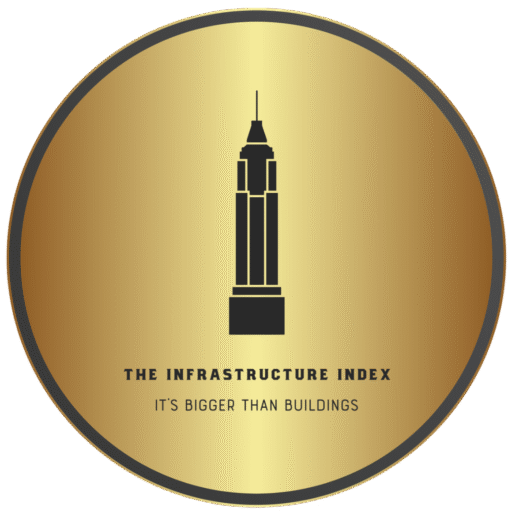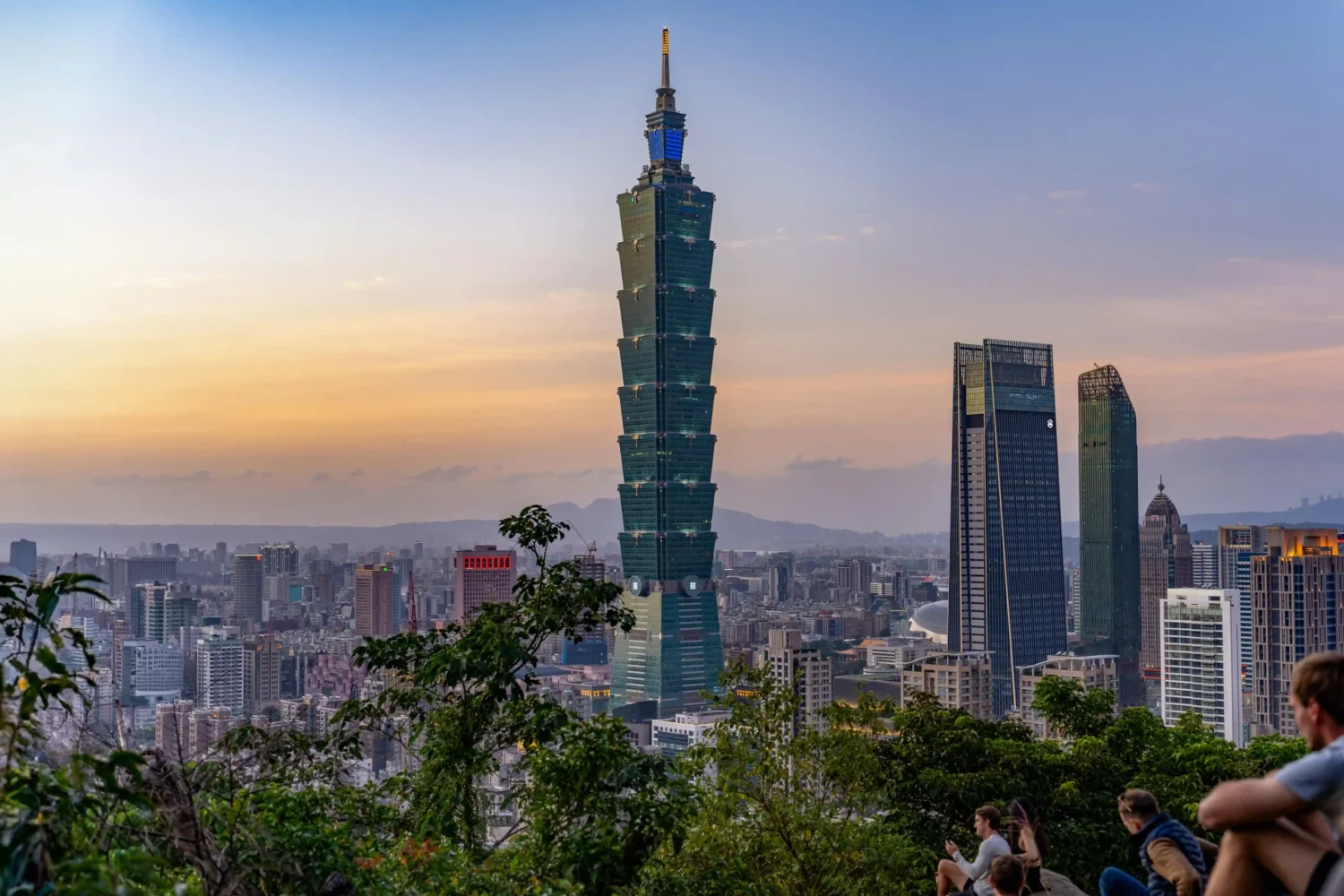Completed in 2004, Taipei 101 stands at 508 m (1,667 ft), holding the title of the world’s tallest building by architectural top (spire) from 2004 to 2010, surpassing Kuala Lumpur’s Petronas Towers. Designed by C.Y. Lee & Partners and developed by Taipei Financial Center Corporation (TFCC), it blends advanced engineering with East Asian symbolism, balancing grace and strength in a seismic and typhoon-prone region. It remains a defining icon of Taiwan, renowned for its engineering, striking design, and observation experiences.
Tower Stats
- Location: Xinyi District, Taipei, Taiwan
- Completed: 2004 (topped out October 2003, officially opened 31 December 2004)
- Use: Mixed-use: offices, retail mall, observation levels, restaurants, event spaces
- Height: 508 m (1,667 ft) including spire, top occupied floor at 438 m (1,437 ft)
- Floor Count: 101 above ground, 5 basement levels
- Floor Area: ~412,500 m² (4.44 million ft²)
- Elevators: 61 high-speed lifts (including double-deck) with speeds up to 60.6 km/h; held the title of the world’s fastest elevator upon completion
- World Ranking (July 2025): #11 tallest building globally per CTBUH; held #1 from 2004 to 2010 when it was overtaken by the Burj Khalifa
- Observation Deck Heights: Indoor deck (Floor 89) at 382 m; outdoor deck (Floor 91) at 391 m; tuned mass damper visible on Floor 88
- Estimated Cost: US $1.9 billion
- Construction Period: 1999–2004
- Wind & Seismic Resistance: Designed for typhoon winds up to 216 km/h and earthquakes exceeding magnitude 7.0
- Sustainability: One of the first supertall skyscrapers to earn LEED Platinum certification in 2011
- Architectural Symbolism: Eight segments of eight floors evoke bamboo stalks, symbolizing growth, strength, and good fortune
A Symbol of the New Millennium
Conceived during Taiwan’s economic rise in the late 1990s, Taipei 101 was a bold statement of national ambition and technological prowess. Completed in 2004 as the tallest building in the world, it marked a turning point in skyscraper design for seismically active regions, pioneering Asia’s supertall era.
Observation Deck Experience
Taipei 101 offers a world-class observation experience:
- Indoor Deck (Floor 89, 382 m): Panoramic city views, interactive engineering exhibits, and tuned mass damper displays.
- Outdoor Deck (Floor 91, 391 m): Open-air views, weather permitting, for an unobstructed experience.
- Damper Gallery (Floor 88): Showcases the 660-ton tuned mass damper, one of the few publicly accessible skyscraper dampers worldwide.
These decks attract over 1 million visitors annually, equating to approximately 3000 daily visits.
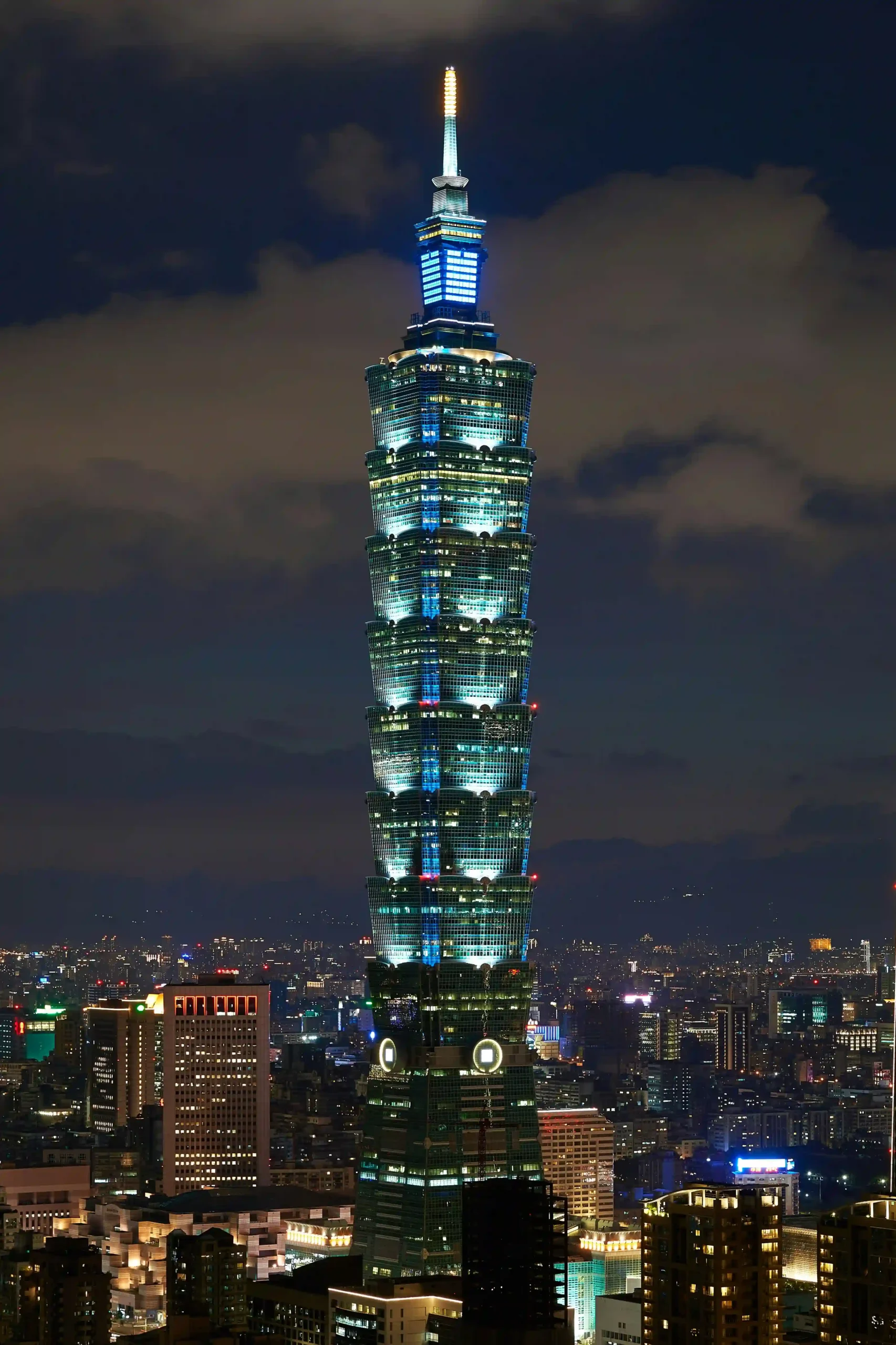
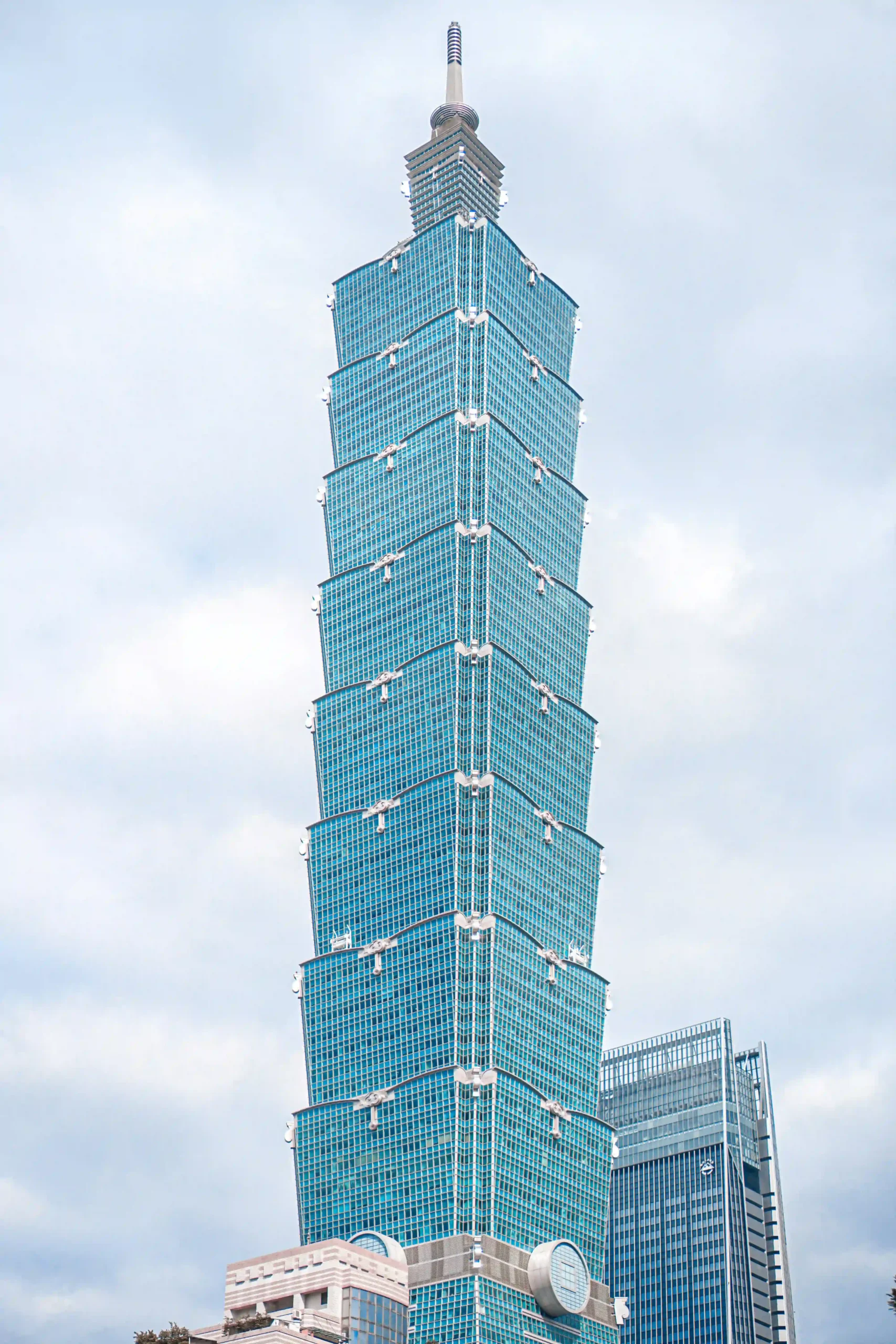
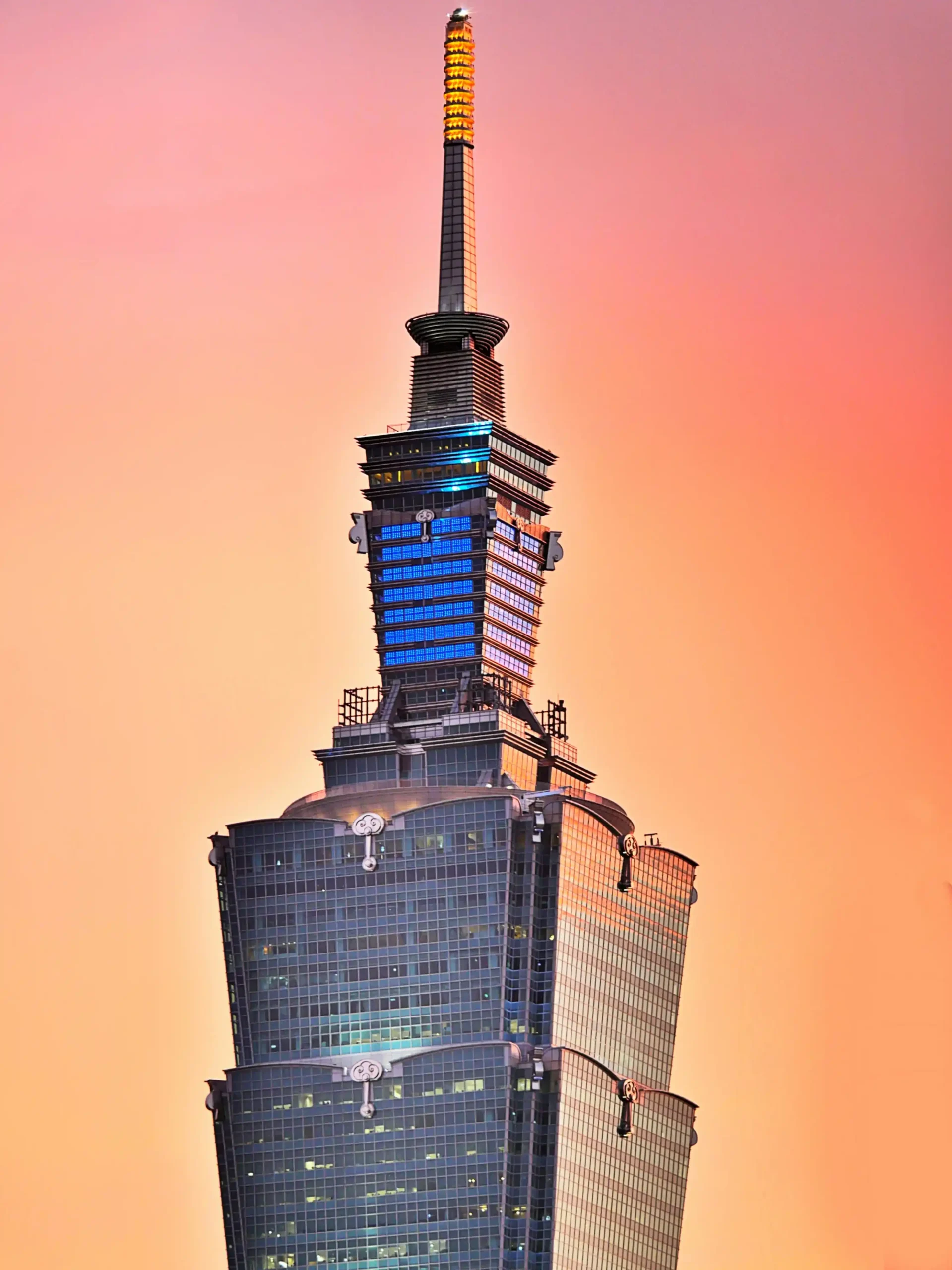
Thank You Photographers! Timo Volz on Unsplash, Lisanto 李奕良 on Unsplash, Tienko Dima on Unsplash, Chill & Explore.com on Unsplash
Tuned Mass Damper
The tuned mass damper (TMD) is a standout feature of Taipei 101:
- Specifications: A 660-ton steel pendulum (approximately 5 blue whales), 18 ft (5.5 m) in diameter, suspended on 92 steel cables between floors 87–92.
- Function: Counteracts wind and seismic sway, reducing building motion by up to 40%. It moves in opposition to the tower’s oscillations, stabilizing the structure during typhoons and earthquakes.
- Performance: Proven effective during Taiwan’s 2024 magnitude-7.4 earthquake, minimizing sway and ensuring structural integrity, though exact motion reduction data for this event is not publicly detailed.
- Public Appeal: Displayed on Floor 88, it’s one of the only skyscraper dampers accessible to the public. Its popularity inspired “Damper Baby,” a beloved mascot featured in merchandise, comics, and promotions.
- Engineering Significance: The TMD’s visibility and performance highlight Taipei 101’s innovative approach to skyscraper stability in a high-risk seismic zone.
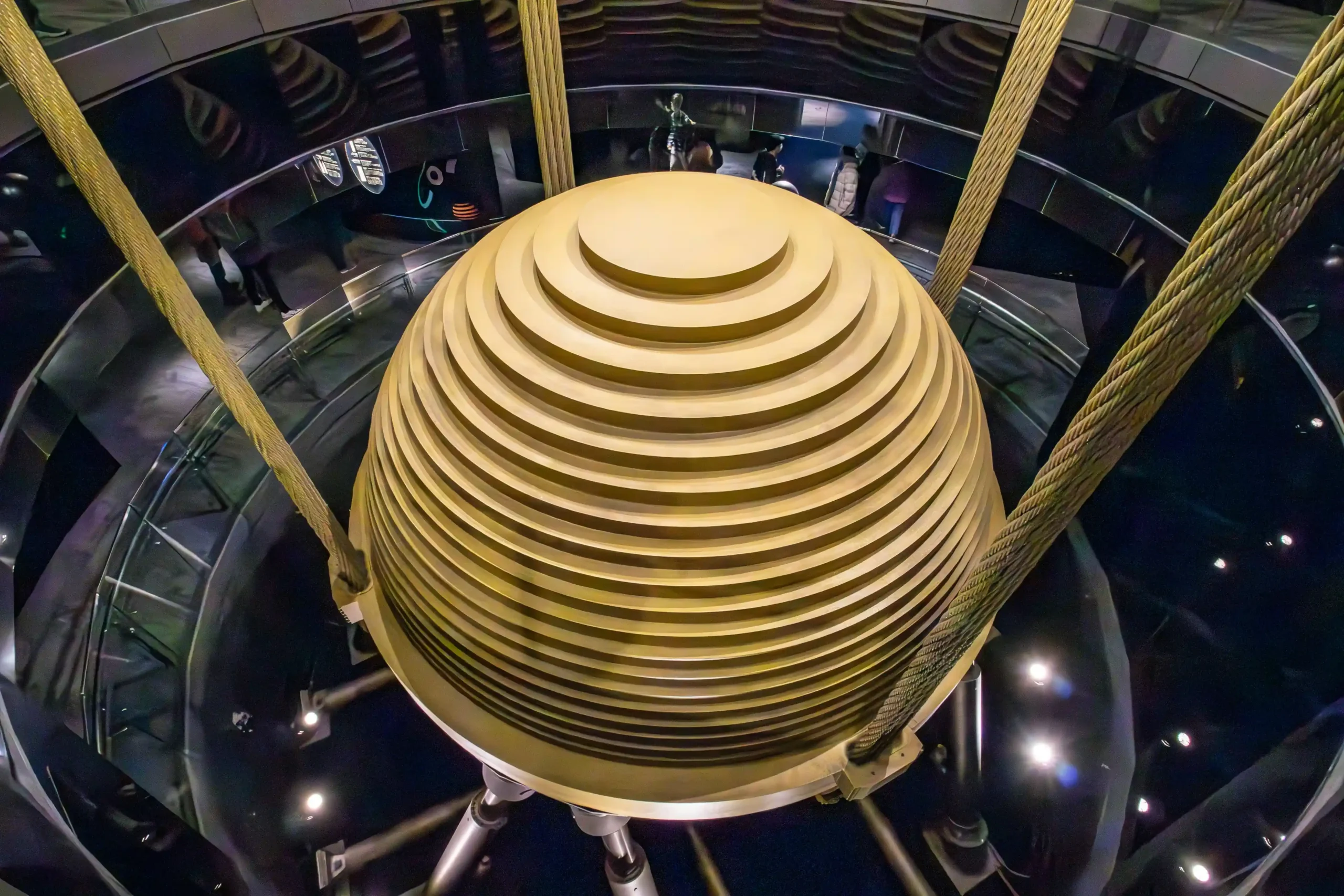
Photo by Robby McCullough on Unsplash
Design and Engineering Mastery
Taipei 101’s design merges cultural symbolism with structural innovation. Its eight segments of eight floors, inspired by bamboo and the lucky number eight, enhance both aesthetics and aerodynamics. The tower’s mega-column and outrigger truss system, with a high-strength steel and concrete core, ensures rigidity and flexibility. Wind-tunnel testing optimized its setbacks and tapering to minimize vortex shedding in typhoon conditions.
Cultural and Economic Impact
Beyond an office tower, Taipei 101 is a cultural landmark, retail hub, and financial center. Its lower floors host global brand boutiques and corporate headquarters, while its observation decks drive tourism revenue. The tower’s annual New Year’s Eve fireworks display, broadcast across Asia, cements its festive and modern identity. The “Damper Baby” mascot, tied to the tuned mass damper, boosts its cultural footprint through merchandise and promotions.
Resilience Against Wind and Quakes
Located near tectonic fault lines and in a typhoon-prone region, Taipei 101 is engineered for extreme conditions:
- Designed to withstand earthquakes exceeding magnitude 7.0 and typhoon winds up to 216 km/h.
- During a 2002 magnitude-7.1 earthquake (under construction), it showed minimal structural response.
- The tuned mass damper and aerodynamic design ensure occupant comfort during severe weather.
Global Legacy and Ranking
As of July 2025, Taipei 101 ranks #11 globally per CTBUH, remaining Taiwan’s tallest building. Taipei 101 is more than a skyscraper—it’s a testament to engineering excellence, cultural symbolism, and environmental stewardship. Its reign as the world’s tallest building from 2004 to 2010 redefined skyscraper possibilities in extreme conditions. Its design, highlighted by the iconic tuned mass damper, continues to inspire, its observation decks educate and thrill, and its legacy as Taiwan’s national icon endures in 2025.
